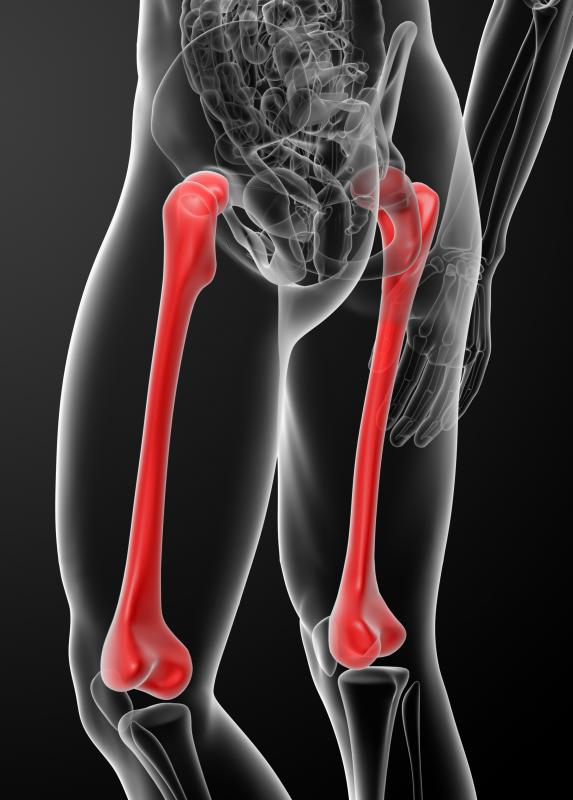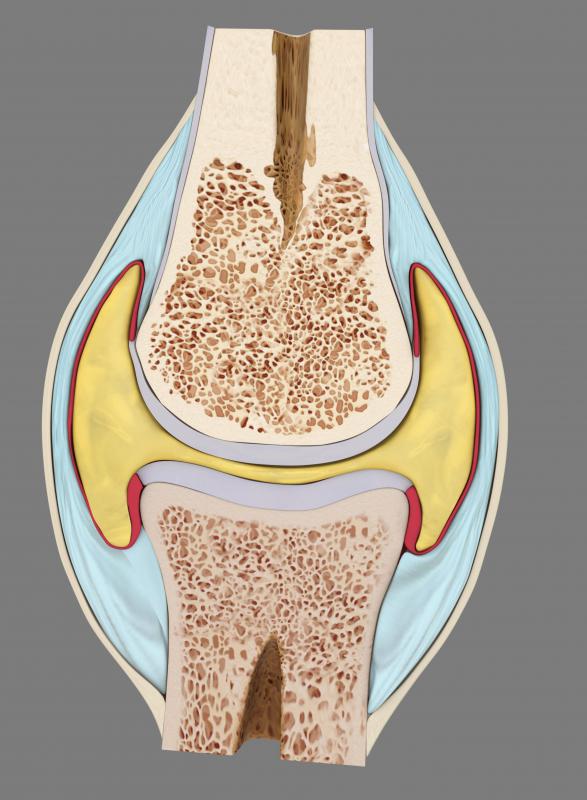At WiseGEEK, we're committed to delivering accurate, trustworthy information. Our expert-authored content is rigorously fact-checked and sourced from credible authorities. Discover how we uphold the highest standards in providing you with reliable knowledge.
What is the Femoral Head?
The femoral head, also called the femur head, is a bony knob at the top of the femur, or thigh bone. This ball-like part of the femur articulates, or connects, with a cup-like indent in the pelvis, forming the hip joint. It is a classic example of a ball and socket joint, a type of synovial joint that allows movement along many axes.
The femur is a large bone located in the thigh of the leg. In four-legged animals, such as horses, the femur is only found in the two rear legs. At the lower extremity, there are two knobby protuberances that articulate with the knee. The shaft of the femur is long and cylindrical and culminates at the top with three protuberances called the greater trochanter, lesser trochanter, and femoral head. The femoral head is the middle, largest of these three projections and is supported by the a small branch of bone called the neck. The neck points the femoral head inward toward the hip at an angle of roughly 126 degrees, so it can articulate with the acetabulum. An irregularly small angle or an abnormally large angle can cause knock-knees or bowleggedness, respectively.

The femoral head is nearly spherical, smooth, and sheathed by cartilage. This cartilage helps protect the femur and pelvis during movement of the hip joint. The hip joint is a synovial joint, more specifically a ball and socket joint. Synovial joints are characterized by a synovial membrane that secretes a lubricating synovial fluid, which fills a space between the articulating bones called the synovial cavity. This fluid keeps the coating of cartilage on the femoral head and the acetabulum slippery to prevent friction and damage to the bones.

The major source of blood to the femoral head is supplied by the medial and lateral femoral circumflex artery. If these arteries are damaged, the head of the femur depends on a small artery in the ligament of head of femur, or ligamentum teres. This ligament attaches to the acetabulum on one end and the fovea of head of femur on the other. The fovia is an ovoid dip in the femoral head, just slightly below its center.

Damage to the femoral head is rare, but can occur in the case of a hip dislocation. There are four classifications of femur head fractures. Type one is below the fovea, type two occurs above the fovea, type three is anywhere on the head with an associated fracture in the neck, and type four is a fracture in any location on the head with an associated acetabular fracture. It usually takes a fairly extreme trauma to cause such damage and may require surgery. Interruption to one of the major arteries can cause avascular necrosis, in which cells begin to die due to lack of blood supply. This is a serious complication and can necessitate hip replacement.
AS FEATURED ON:
AS FEATURED ON:

















Discuss this Article
Post your comments